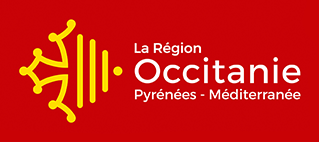The Laboratory of Microbial Biodiversity and Biotechnology (LBBM), is a joint SU and CNRS (InEE) research and service unit founded in 2014 with a mission of advancing the frontiers of basic scientific research in environmental microbiology and (bio)chemistry while responding to major societal challenges in human and environmental health.
LBBM has a 20-year-long partnership with the cosmetic and pharmaceutical company Laboratoires Pierre Fabre, and in 2017 the Biosensors, Analyses and Environment (BAE) of the University of Perpignan Via Domitia joined the unit which now comprises some 40 persons.
Our main objectives are:
- to understand the underpinnings of the interactions between microorganisms, other (micro)organisms, and their physico-chemical environment, particular in symbioses and biofilms
- Understand the fate and effects of chemical and biological contaminants in aquatic environments through the development of sensitive and accurate detection systems and the study of the fate, ecological impacts and microbial degradation of chemical contaminants
- Describe and explore microbial biodiversity and develop novel biotechnology products from environmental microorganisms and
- Perform services to meet the needs of industrial partners, environmental agencies, and others.
More information: lbbm.obs-banyuls.fr
The research in the LBBM is organized around three major topics.
Topic 1 - Microbial Biodiversity and Chemodiversity
In this topic, our activities focus on the study of the diversity of microorganisms, the processes leading to the structuring of microbial diversity, and in turn, the role of microbial communities in the functioning of more complex systems (from holobionts to ecosystems). We are particularly interested in understanding chemically mediated mechanisms involved in these processes, especially in symbiotic relationships. Therefore, the study of chemodiversity associated with microorganisms, in particular the discovery of new molecular structures, represents an important and significant part of research in this theme. While many of our studies focus on the microbiota associated with marine organisms (e.g., lichens, sponges and macrophytes), we are also studying interspecific interactions in other ecosystems. Cell-to-cell interaction processes, "quorum sensing", the chemical diversity of communication molecules and their functional role, in the regulation of biofilm formation for example, are also part of this theme. Finally, the activities related to the valorisation of molecules and extracts resulting from this research are part of this research theme.
Topic 2 - Chemical Contaminants: Detection, impact and biodegradation
In Topic 2 our activities focus on the understanding of the fate of emerging and persistent organic micropollutants in the environment and their interaction with organisms inhabiting these environments, both as noxious compounds as well as a source of elements or energy that ultimately will lead to their biodegradation. The theme greatly benefits from the association with the UPVD team and its expertise on the development of (bio)sensors to detection of specific molecules in complex matrices.
Currently, different categories of chemical contaminants and matrices are being studied. These include medicines, personal care products, organic pesticides and food toxins.
Topic 3 - Ecology of pathogens
This topic has always been an important part of the activities of the LBBM, where a number of projects have been carried out for the detection and monitoring of bacteria of interest for human health [e.g. faecal coliforms in recreational waters (Collaboration with Veolia Environnement); Legionella spp. in cooling towers of nuclear power plants (Collaboration with EDF)]. Activities on this theme were at the origin of the association between the BAE and the LBBM.
Current research focuses on the detection and understanding of biotic (e.g. quorum sensing) and abiotic factors controlling the dynamics of bacteria such as Vibrio spp. and Aeromonas salmonicida, pathogens associated with diseases affecting aquaculture.











